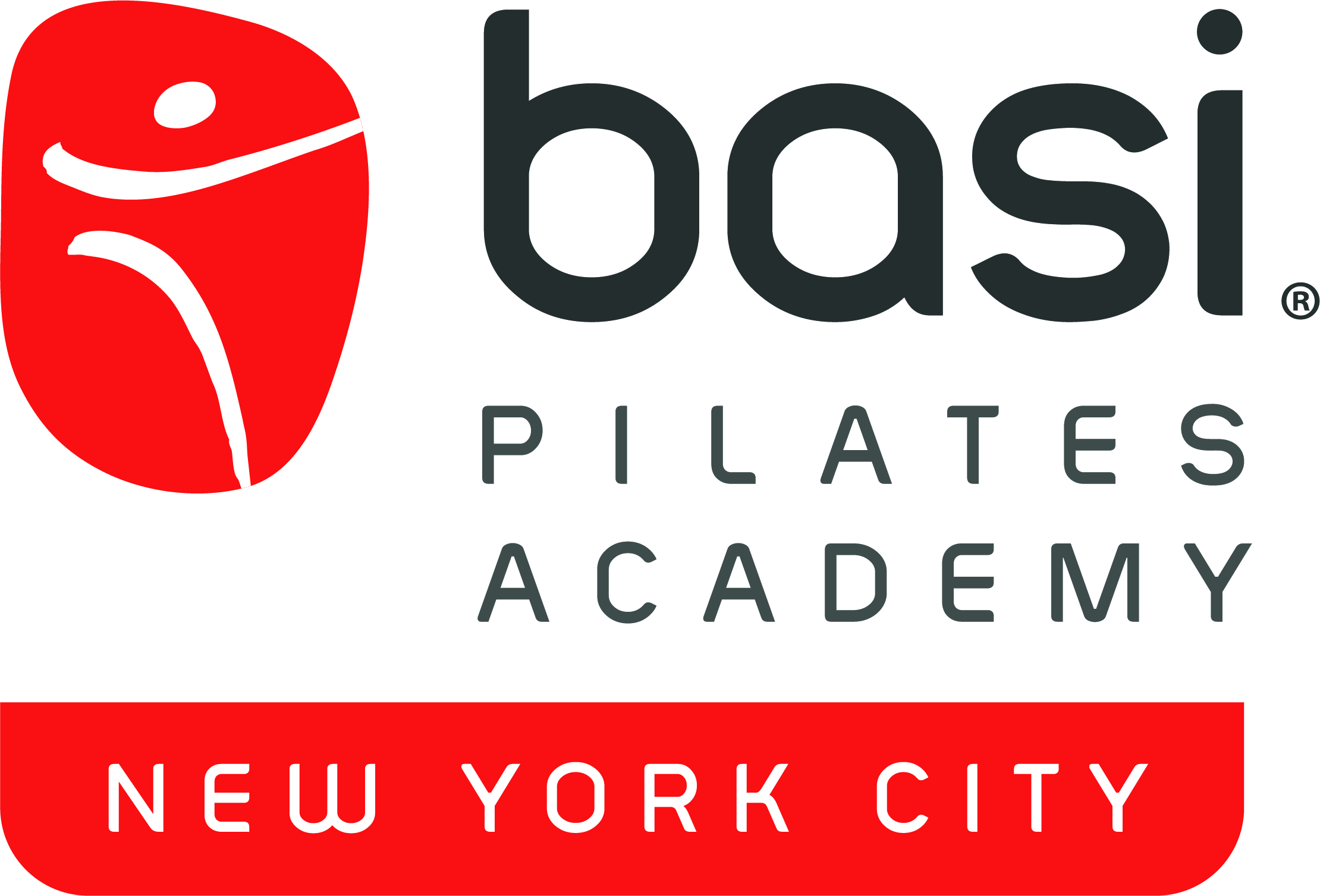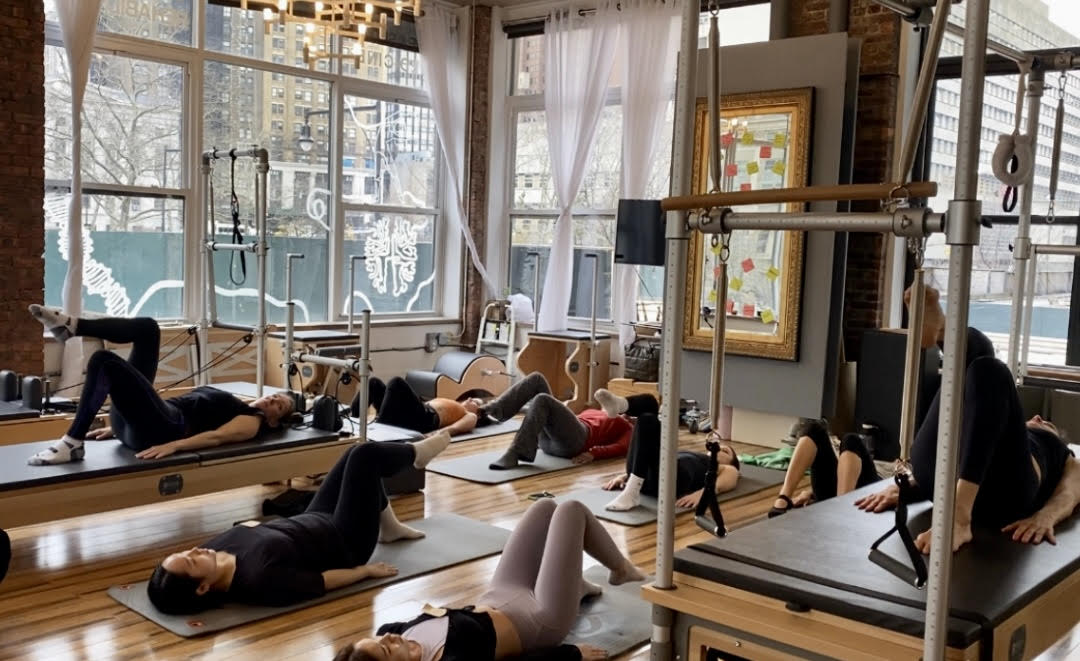What does Serena Williams, Tom Brady, Simone Biles, Misty Copeland all have in common, besides being amazing athletes?
They all have coaches.
What do you and I have in common with all of them?
We all could benefit from having a coach.
I have many friends who were top of their game in their sports growing up and many performed competitively or professionally through out their adulthood.
But then what? The lucky ones get sponsorship to continue getting coached, but many just go out on their own doing recreational sports or coaching themselves in the gym; with the mentality that they should be able to do it all themselves. Taking a group class or enlisting a trainer to add the coaching element to your fitness routines will bring invaluable quality and longevity to your sport, functional movement, and favorite activities. I promise.
As someone who felt the benefits of Pilates lessons to complement my dance training at the age of 15. I continue to this day to invest in having someone coach me in all of my movement endeavors, from dance to my adulthood endeavors of skiing. I often train myself but I always check in with an instructor regularly to see what I can’t in my own movement patterns and encourage me to reach my potential. As a teacher of movement, for almost 30 years, I encourage you to do the same. No one is above needing guidance and everyone will feel the benefit of this investment. By investment, I mean dedication and time.
Keep reading for ways of doing this in all different ways, including at no cost.
Hawthorne Effect
This was coined a term in a factory in the 1960s when observing people at work. Basically the research showed that when people know they are being observed, their performance at skilled tasks improves. Certainly the number of people watching and the reason why will influence everyone differently, but the idea is worth noting. I find this to be true in my decades of being the teacher and the student.
Why Do We Need A Coach?
A coach will want to know your specific goals from being able to do errands pain free, to training for the Olympics. They will provide the structure in which to work and safely push you to your limits of endurance and technique. They will know how to read you on any given day and decide best which element of cross training to pursue, and what habits to form, reiterate, or break down.
Having someone to answer to and someone to help mark progress are also benefits but I do believe we execute movement differently when we have some sort of “audience.”
There is a difference between how it feels to dance in my kitchen vs how it feels in class/ rehearsal at the dance studio with my fellow dancers, vs how it feels when on a stage.
Intermittent coaching on the ski slopes has been helpful for me. Skiing down the slopes with some tips on how to make things better in the moment or drills to improve my skiing long term is an investment. This healthy outdoor sport is something I can do into my old age if I am technically proficient.
Pilates Instruction As Coaching
I’m a little partial to Pilates, but not because it is my career. It is my career because I’m partial to it! There is a correlation to all movement arts and sports within the Pilates repertoire, and principles. Balancing the spine in flexion, extension, lateral flexion and rotation while working all of the muscle groups eccentrically, concentrically, and isometrically is standard in a Pilates lesson and carries over so naturally to cross training an sports specific technique.
It is the job of your teacher to spot the imbalances, habits, strengths, and weaknesses to guide you to your goals.
At a continuing education course I took with BASI Pilates, we called ourselves “detectives of movement.” It’s so appropriate! Identify all the things, sort them out, and then move, and then forget about the discoveries to a degree in order to be free. Move mindfully so that you don’t have to be so mindful. I am always fascinated by the human body and its complexities, but even more so by its simple homeostatic design. Helping students unlock their potential by understanding their strengths as well as their counter productive tendencies is unique every time, however I am blown away that the same principles and even exercises work for people of various skill levels and intentions.
Example 1: My professional basketball player needs sports specific training on improving his jump technique since experiencing plantar fasciitis. He also needed to improve the agility of his limbs since he were experiencing hip and groin pain.
Example 2: My ex competitive gymnast needed work on spinal articulation since she was experiencing a lack of mobility in her lumbar spine.
Example 3: My student who suffered a stroke was working on regaining movement in his left side along with supporting the over compensation of his right side.
Common Theme with all 3 examples: Each one of these students needed cuing to help them with correct pelvic placement while moving their legs and hip muscles, they all needed awareness of how to move their arms from their back rather than from the neck, and they all needed foot strengthening exercises. The exercise selection is be based on these specific goals, chosen specifically around how their spine postures naturally, and then modified or varied if needed.
Group Classes
Receiving Pilates instruction alongside others is a productive way to take the attention off yourself, and for you to remember “what’s next :)” my favorite aspect of group training is that you can pick up on others’ energy to keep you moving. There is a class focus and level that you adhere to and can mark your progress. Professional team athletes work in this realm everyday with their teammates.
I personally take professional dance classes that I have been taking since I was a teenager. They are the same today as way back then. I don’t think they are any easier, and in fact they are more humbling than ever, but it is a barometer for me to measure my strength, range of motion and quality of movement over the years.
Group classes are also an amazing way to work out with friends, and supplement your private training or self coaching methods.
Virtual vs IRL
In 2020 I was so grateful for zoom, it not only helped to keep our studio alive, but it also helped me continue my own dance training. I was surprised at the nuisances I could see in my students and the corrections I could give over a computer screen. I was pleased that I could keep up my technical training as a dancer.
Since virtual workouts are missing the full 3 dimensions and certainly miss the element of human connection, it is important to recognize this as part of the complete picture of your health and wellness program. I know students that swear they will never do another virtual session again and others who always hybrid if they are out of town and can’t make it in person. If you do mostly IRL, virtual training is an amazing compliment to keep up consistency and essentially practice what you are trying to improve on. While it is a great option, an in person coach will be able to guide you energetically in a way that is hard to do over a screen. If you do mostly virtual training sessions, then consider scheduling even 1-2 in person lessons per month, come with questions and learn how to self correct.
Self Coaching
Self coaching is the voice inside your head. It could also be the use of a mirror, videotaping, or using apparatus that gives you feedback. I admire people who are self taught at anything, it took me a long time to be able to properly train myself and feel like I could actually reach a flow state. Some things to remember.
- Schedule the time with yourself like you would any appointment.
- Have 3-5 cues or tips rolling through your mind to focus on when doing technique training. For example, relax the top of your shoulders, stabilize the pelvis, lengthen the neck….These are often things you learn by doing and knowing your tendencies as identified by a coach or instructor.
- Set the number of desired repetitions in your mind before you start and stick to it.
- Focus on your breath and sending breath to areas of stagnation, moving from and with your breath. This can aid in getting out of your analytical mind and more into how movement feels.
- Remember our universal goal is to feel good. 🙂
Options At Our Studio, BASI Pilates Academy – NYC
- Private Lessons: Start with a discounted intro package to determine the best route forward. Meet weekly, 3x a week, or 1x month depending on your goals, schedule, and budget.
- Group Classes: 5-7 person maximum on the mat and reformers. A great way to workout with your friends.
- Virtual Zoom Privates Lessons: See your instructor in the comfort of your own home or while traveling.
- Virtual On Demand: Visit Virtualogic.earth to watch and move along to pre recorded videos of different levels and goals.
- BASI Bodies Program: Train with a student teacher and be part of a shared learning experience.
*Introductory Lessons: We recommend our discounted 2 private lesson option regardless of your past experience. Here you will assess how to best correlate Pilates with achieving your goals, begin building a program with your instructor, and learn self corrections to take with you into group classes and your active life outside of the studio.
Spirals Rotation vs Lateral Flexion
Chest Opener – Thoracic Rotation
Side Bend w/ Twist – Lateral Flexion
Spinale Twist
Side Bend (modified on knees) Lateral Flexion
Stadanding Rotation – Legs Parallel and Shoulders Externally Rotate
Butterfly – Lateral Flexion and Rotation
Porta Au Bras – Rotation and Lateral Flexion
Rib Twist and Hip Rotation
Side Sitting with Side Bend
Side Lift
FOLLOW US
For full length videos that benefit our scholarship program visit Virtualogic.earth

